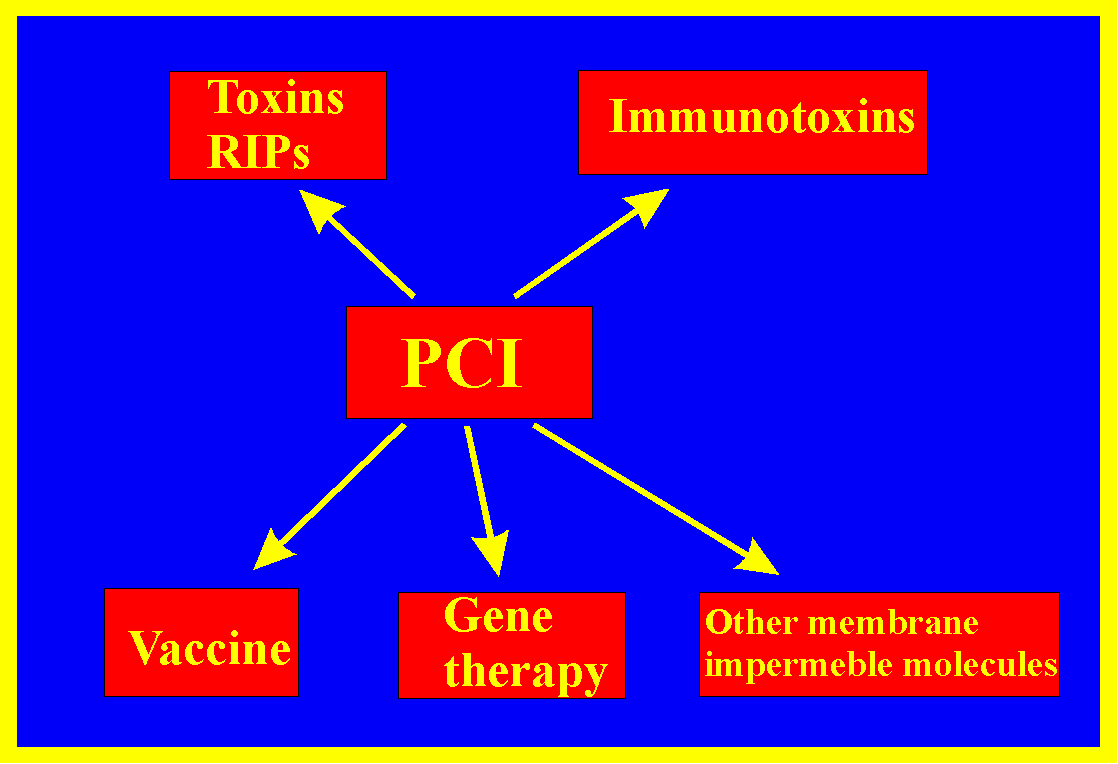Research interests Current projects
Most of our projects are related to development of PCI for improvement of the therapeutic potential of macromolecules with especial emphasise on protein toxins and gene therapy.
Gene therapy
Ribosome-inactivating proteins (RIPs)
The ribosome-inactivating plant protein toxins (RIPs) are taken up into cells by endocytosis and a small fraction (<5%) is relocated via the Golgi apparatus to the cytosol where these toxins can inhibit protein synthesis and induce cell death. Type II RIPs contains 2 polypeptide chains, A and B, where B binds to the cell surface, while A has a cytotoxic effect. Type I RIPs lack the B-chain, are taken up and relocated to the cytosol only to a minor extent, and therefore exert low cytotoxicity. We have recently documented that PCI potentiates the cytotoxic effect of the type I RIP gelonin (and other similar toxins) several hundred-fold in vitro.
Immunotoxins (ITs)
Photosensitizers are often preferentially located in tumor tissues with a tumor-to-normal surrounding tissue ratio of approximately 3:1. Since the cytotoxic effect of the photosen-sitizers is exerted only in areas exposed to light, the specificity of the photodynamic treatment for tumor tissue is relatively high. However, although this has not been shown gelonin is not expected to have any inherent specificity for neoplastic lesions. In an attempt to improve the specificity of gelonin uptake, gelonin has been conjugated to an antibody (MOC31, towards the antigen EGP-2 found on most carcinomas), and we have shown in vitro that the immunotoxin MOC31-gelonin increases the specificity of the treatment for the target cells.
